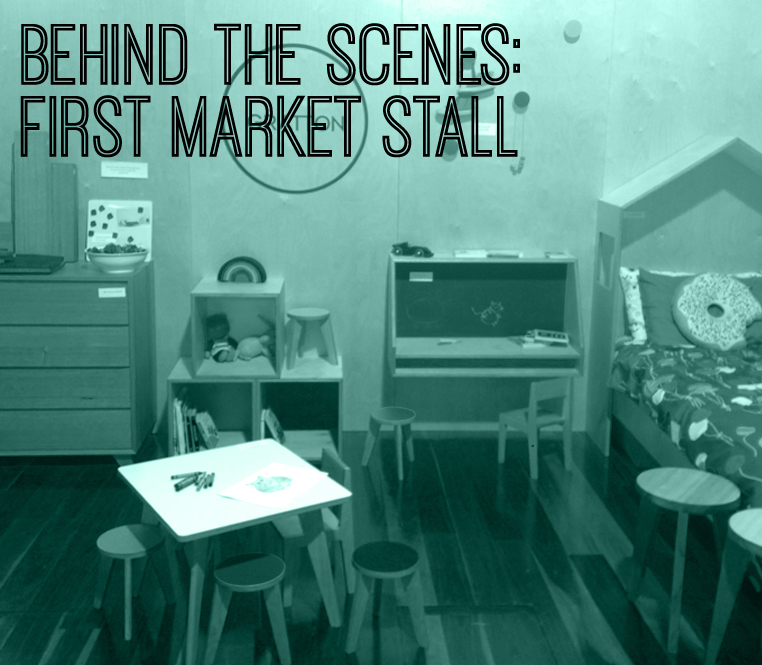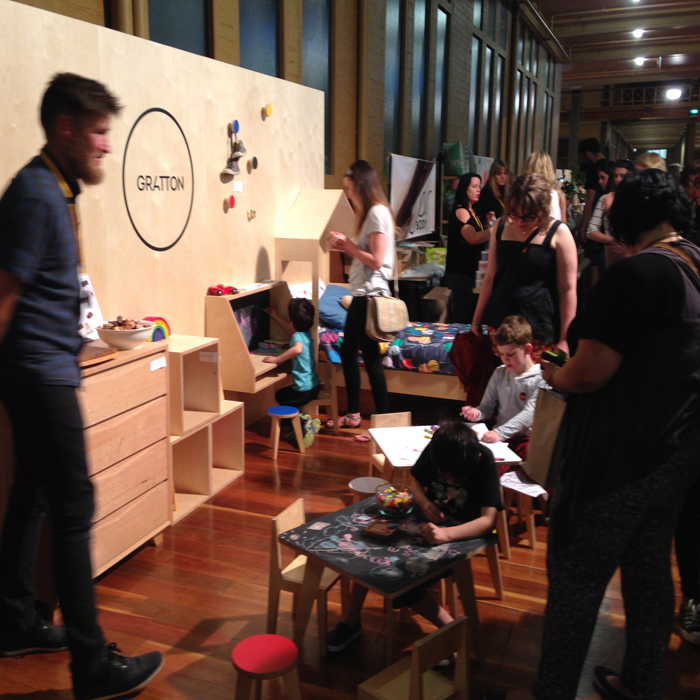How to stay "Instasafe" as a creative
I love Instagram. It lets me communicate to the world what I'm about (nourishing food, natural light and comfortable shoes wherever possible, and preventative health in life, law and business!), and has allowed me to connect with so many like-minded clients...
Photo via Pexels
I love Instagram. It lets me communicate to the world what I'm about (nourishing food, natural light and comfortable shoes wherever possible, and preventative health in life, law and business!), and has allowed me to connect with so many like-minded clients through my page @thelawyerslunchbox.
And I know many of my clients loving using it for their own businesses.
But we all need to make sure we stay legally safe on Instagram. This means not falling foul of Insta's terms and conditions, using the right images and not saying or doing anything illegal.
Here are some tips...
Types of images
Instagram has the right to remove, edit, block, and monitor accounts containing content that Instagram determines violates their terms of use.
To avoid problems, you must not post violent, nude, discriminatory, unlawful, infringing, hateful, pornographic or sexually suggestive photos. This term is interpreted sensibly, for example if your business is in fashion, intimate apparel, swimwear, music, celebrity, modelling etc, photos may be quite sexual without causing any trouble. But nudity, or pornographic inference (even if digitally-created), will not be okay. Use common sense when thinking about what Instagram and its diverse audience may find offensive. Nudity in photos of drawings, paintings and sculptures will be acceptable, as will photos of mastectomy scarring and breastfeeding women.
If your business is related to children or you like to share photos of your own family, be mindful of the broad audience that they may be open to. Photos of nude or partially nude children may be removed, even if they seem innocent and are being shared with the best intention. Instagram’s aim here is to ensure that they don’t fall into the wrong hands.
Copyright
You can only use images that do not infringe others’ intellectual property rights. If you are posting authentic images created by you or your business (such as your own photos, photoshoots, illustrations, videos, or graphics) then this is not an issue. But if you want to post an image found online, then you must be vigilant. There are millions of high-quality graphics and photos online available for free commercial use. Many websites curate images in the public domain, and you are free to use them in any way. In most cases, you do not have to provide attribution. But check the terms of the site to make sure. If attribution is
required, check what format.
It is best to assume every image you find online is copyrighted – a copyright notice is not legally required as notification of copyright, so the absence of a © or watermark isn’t a sign that no copyright exists. If an image is covered by copyright, the copyright holder may agree to some uses but not others. You must check this before using the image.
If you alter a copyrighted image, it does not relieve you from potential liability. If you repeatedly infringe other people’s intellectual property rights, Instagram will disable your account.
On Instagram, you are liable for what you upload. This means you are legally responsible for copyright violations even if you hire a social media professional who chose and used the offending image. It is important to ask your social media manager where they source their images from. You should contractually ensure that if an image they use is found to violate copyright and you are required to pay, that they will indemnify you.
Music is covered in the same way as images, and you are not allowed to use music that you don’t own the rights to, for any commercial or non-personal use. This includes music in videos uploaded to your feed as well as Instagram lives and IGTV, and can extend to music playing in the background of videos.
Photo via Pexels
What you can legally say
Don't copy any other person's written work in your Instagram posts. This may infringe their copyright.
And don't post unwanted comments, likes or other forms of commercial or harassing communication (spam) to Instagram users. This includes repeatedly contacting people for commercial purposes without their consent.
Further, online cyber bullying is a crime in Australia. You must not threaten, harass, or offend someone, stalk someone, access others’ Instagram accounts without permission or defame someone on Instagram.
How to deal with trolls
A troll is a member of an online community who deliberately tries to disrupt that community by posting inflammatory content.
How should you deal with trolls commenting on your business page?
Use Instagram’s built-in reporting option. Instagram will quickly remove content that does not meet community guidelines.
Unfollow or block the person who posted the comment. And delete the trolls’ comment on your post.
Sometimes ignoring a troll is best. If they are looking for a reaction, they may lose interest when you give them nothing.
If the troll is a customer with a complaint, take notice and try to help. Humour can be used to effectively engage unhappy customers and turn them into advocates for your business. Acknowledge yet make light of the situation, and apologise for the customer’s experience.
If the troll is spreading rumours or misinformation, address the issue head-on and retaliate with the truth.
If the troll points out a mistake, look into it, make the proper corrections and admit that you were wrong.
Instagram has the right to modify or terminate your account for any reason, without notice,
and at any time. So stay the right side of their terms and the law.
Jessica Kerr is the director of Sinclair + May. Jessica set up Sinclair + May with a view to do law differently and make legal services accessible for small businesses. Sinclair + May operate on a fixed fee basis and offer retainer services for their clients. Sinclair + May is a female-led, boutique commercial law firm and work extensively with the creative industry. You can follow Jessica on instagram @thelawyerslunchbox for useful legal tips and see more about Sinclair + May at www.sinclairmay.com.au.
Behind the scenes: our first market stall
 By Emma Clark Gratton
As I’ve mentioned before, my husband and I run a furniture-making workshop and have recently released a range of kid’s furniture. We are big fans of visiting craft and design markets so took the opportunity to launch the new range at a market. While furniture isn’t commonly sold at markets (besides old bearded men making coffee tables out of stumps at your local hippie market), we thought it would be a great way to increase awareness of our brand, meet our customers and make some new connections.
By Emma Clark Gratton
As I’ve mentioned before, my husband and I run a furniture-making workshop and have recently released a range of kid’s furniture. We are big fans of visiting craft and design markets so took the opportunity to launch the new range at a market. While furniture isn’t commonly sold at markets (besides old bearded men making coffee tables out of stumps at your local hippie market), we thought it would be a great way to increase awareness of our brand, meet our customers and make some new connections.
Which market?
There are heaps of markets to choose from, depending on the type of product you have, the amount of stock you are prepared to make and who your customer is. Markets range from smaller specialty markets, such as Boutique Markets and Rose St Artists Market, to local community markets, right up to design markets such as The Finders Keepers and trade fairs such as Life Instyle. We decided to apply to The Finders Keepers in Melbourne, as the ethos and clientele suited our products.
The countdown
Once we had confirmation that we were officially accepted into the markets, the real work began. We used it as an opportunity to freshen up our business, so we had a new logo designed, overhauled our website and designed a few new products. I arranged for new business cards, postcards, stickers and stocksheets to be printed, and made a huge masterlist of everything we would need on the day, from props to snacks to packing materials and payment facilities.
On the day
We had the afternoon to set up our stand before the markets opened at 6pm. We had prepared a quick mock-up of the stand in the workshop beforehand, so I had an idea of where everything would go. Once we had the stand up and ready, we wandered around and were blown away (and slightly intimidated!) by how amazing everyone else’s stands looked. We met our lovely stall neighbours, had a quick bite to eat and then the crowds poured in.
We quickly realized that it was up to us to engage the customers and be as approachable as possible. Start talking to people as soon as they approach your stand and keep smiling! It might feel artificial at first, but asking people how they are, how they are enjoying the market and letting them know something about your products can be a great way to make a connection and hopefully, a sale.
That said, being ‘on’ all the time can be exhausting, so take regular breaks. Make sure you bring a friend or helper to cover the stand while you duck off to eat lunch or have a rest.
What worked
Getting customer feedback
Getting to meet our customers and potential clients directly was invaluable. It was a great way to see which products people were interested in, what customizations were popular and who our customers were. For example, quite a few people asked if we made bunk beds. We didn’t, but are now adding bunk beds to our range in response to the customer feedback. We had always imagined mums being our biggest customers, but just as many dads purchased products too, which was interesting information.
Lollies
I grabbed a few bags of lollies at the last minute and put them in a bowl on one of our kid’s tables. It turned out to be perfect, as lollies attract kids and kids bring parents! We also provided chalk to draw on our Mini Chalky tables and crayons and colouring in pages for our Mini tables, which were a hit with the kids. While the kids drew, we chatted to the parents and made a few sales and contacts.
Trolleys
Beg, borrow or steal at least one trolley to carry your gear. Using a trolley will literally cut your bumping in and out time in half. We ended up lending ours to our neighbouring stallholders once we were unpacked, as it was a bit of a walk to the carpark and lugging boxes of stock and trestle tables is not fun.
What didn’t
Fancy shoes
I made the mistake of favouring fashion over function on the first night and my feet were not happy. Make sure you wear shoes and clothes that you will be comfortable standing in all day, in hot or cold weather.
Not spending all our profits
As tempting as it is, try to resist spending all your cash! As much as we love to support other handmade businesses, we did want to take home some profits and so I set myself a budget for a few special things that I was eyeing off over the weekend. Chatting to other stallholders is an excellent way to get advice, suss out how other small businesses do it and make new connections.
Not being prepared for the post-market rush
We expected to be busy the weekend of the market, but were not expecting the amount of orders in the weeks following. Our site received more traffic than ever before and we got a lot of requests for custom orders and different projects. In retrospect, this should have made sense as people don’t really go to a craft market to buy a large piece of furniture and would rather purchase it later on. We managed to adjust our workflow to accommodate the influx, but it would have been better if I had planned for the orders.
Emma Clark Gratton is an interior designer, writer and podcaster who, alongside her husband Lee, runs GRATTON, a timber furniture and architectural joinery company. She blogs at Worst House Best Street and posts endless photos of her sons on Instagram at @emmamakesthings.



